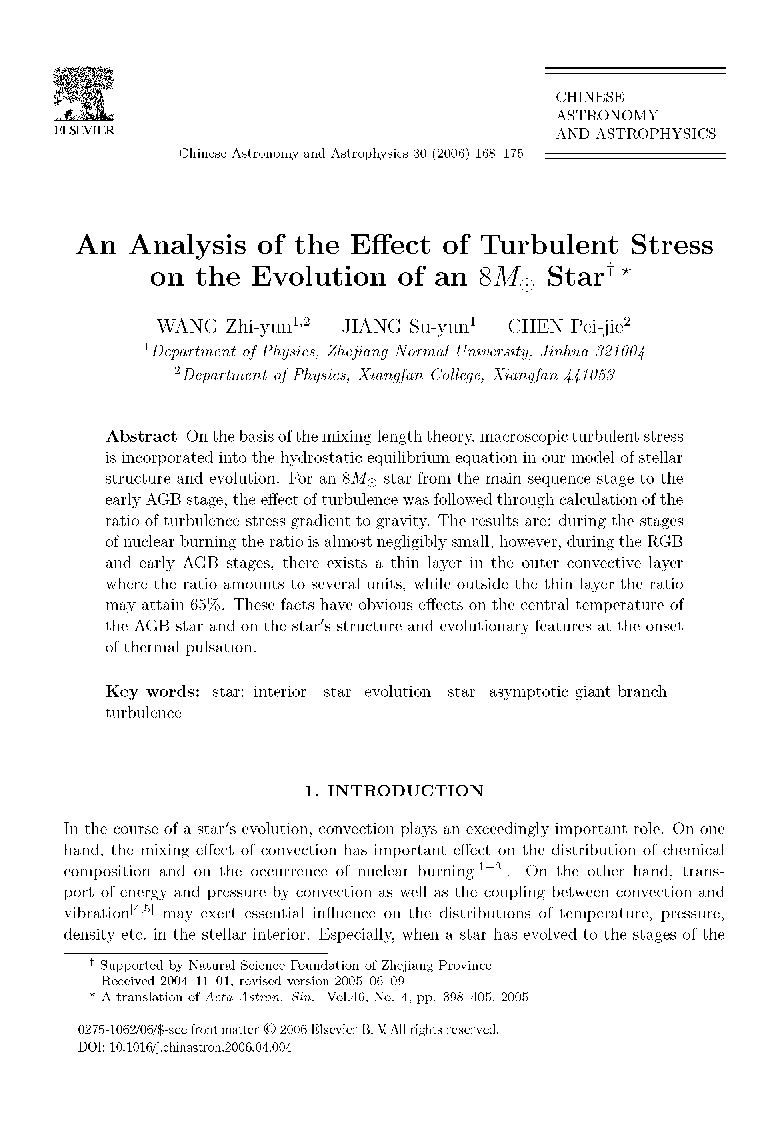| Article ID | Journal | Published Year | Pages | File Type |
|---|---|---|---|---|
| 1772216 | Chinese Astronomy and Astrophysics | 2006 | 8 Pages |
On the basis of the mixing-length theory, macroscopic turbulent stress is incorporated into the hydrostatic equilibrium equation in our model of stellar structure and evolution. For an 8M⊙ star from the main sequence stage to the early AGB stage, the effect of turbulence was followed through calculation of the ratio of turbulence stress gradient to gravity. The results are: during the stages of nuclear burning the ratio is almost negligibly small; however, during the RGB and early AGB stages, there exists a thin layer in the outer convective layer where the ratio amounts to several units, while outside the thin layer the ratio may attain 65%. These facts have obvious effects on the central temperature of the AGB star and on the star's structure and evolutionary features at the onset of thermal pulsation.
